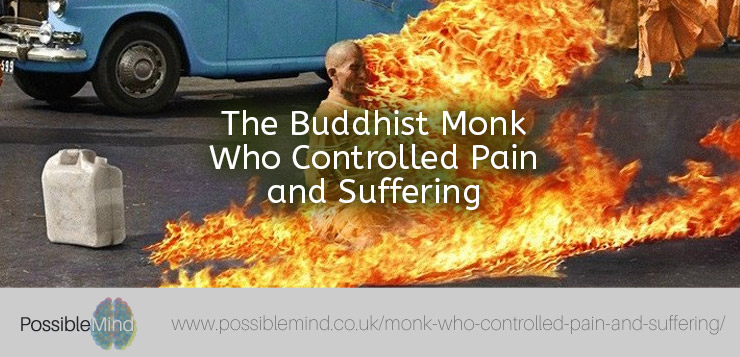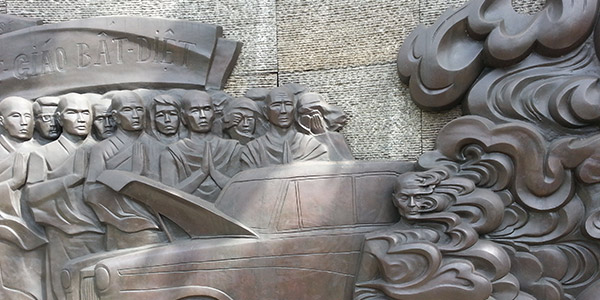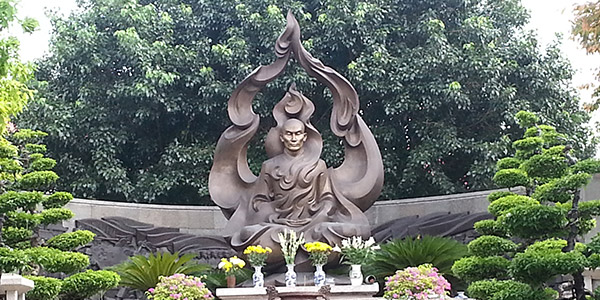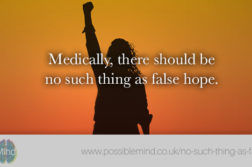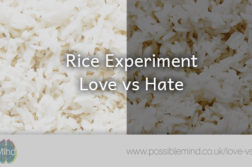As The Buddhist Monk Burned He Never Moved A Muscle, Never Uttered A Sound! And Learn How His Method Can Help You Control Your Pain!
Yes! you did hear me right, as a protest to the way the government was treating the Buddhist religion Thích Quảng Đức sat down in the middle of the road on a cushion that had been placed on by two other Monks.
Then! To everyone’s amazement, the two monks poured petrol over Thích Quảng Đức’s head and set him alight.
Now if that was you or me or anyone else, we’d rolling around in agony experiencing pain and suffering beyond belief!
But! In contrast to those around him who were sobbing and crying and in total shock! He never moved a muscle, never uttered a sound,
I can hear you saying, “Mark have you completely gone completely mad” I have only got a bad back!
Now, of course, I do not expect you to go and sit on your driveway or road and set yourself on fire to prove you can block out the pain.
But what I would say, there are a many things we can learn from Thích Quảng Đức’s control of massive amount of pain and discomfort.
What you are going to learn from this post
- How Thích Quảng Đức managed his discomfort whilst on fire.
- Discover how you can control your pain and discomfort like Thích Quảng Đức.
How Thích Quảng Đức managed his discomfort whilst on fire.
The first thing to say here is that a lot of people feel they know how this monk managed the pain.
I will share the pain management techniques they believe Thích Quảng Đức used.
In my opinion, all the techniques are possible but one is much more likely than any of the others because of the sources closeness to Thích Quảng Đức.
The first suggestion is from a question answered on Reddit:
There are schools of meditation that teach that there is a difference between pain and suffering. Pain is what you feel, but suffering is in your reaction to the pain. If instead of having a strong, negative reaction to the pain, you simply accept it, you can experience pain without suffering. “Simply accepting” in general is easier said than done.
Source: Corysama Reddit User
Now… I feel Corysama has some really good points here. Pain and suffering are very different as Haruki Murakami explains in his famous quote “Pain is inevitable. Suffering is optional.”
This is extended upon by Shinzen Young in his book ‘Break Through Pain’ who shares his philosophy of suffering and pain with an equation.
So… What is The Pain Equation and how can it help with pain?
Simply put it states that suffering is equal to Pain times Resistance ( S=PxR ).
To suffer we need to 2 things; Pain and Resistance.
So let’s say Thích Quảng Đức didn’t resist the pain and just accept the discomfort, meaning the resistance is low or even at zero.
What would his amount of suffering have?
According to The Pain Equation zero as well. Even if his pain was 100 the suffering will be zero, leaving him with just the sensation of discomfort to deal with.
The next answer was from a Quora user
This act is obviously not beyond the range of human endurance as he, a human being, could do it. How was he able to accomplish this feat? Three words: motivation, detachment and dhyana.
Source: Flavio Costa Quora User
So let’s break these three words down further:
Motivation
Dictionary.com describes Motivation as providing a reason to act in a certain way.
Thích Quảng Đức motivation was religious freedom from persecution and oppression from the Catholic Vietnamese president Diem is clearly documented in a letter he left before this act of self-immolation(killing oneself as a sacrifice):
Before closing my eyes and moving towards the vision of the Buddha, I respectfully plead to President Ngo Dinh Diem to take a mind of compassion towards the people of the nation and implement religious equality to maintain the strength of the homeland eternally. I call the venerables, reverends, members of the sangha and the lay Buddhists to organize in solidarity to make sacrifices to protect Buddhism.
Detachment
A little like the non-resistance we discussed earlier, detachment required Thích Quảng Đức to observe and let any feelings and sensations fulfil their purpose of being felt.
The Monk, I expect, did this by having a deep understanding of impermanence(nothing lasts), much like the saying ‘this too shall pass’ that states everything will end so there is no need to be attached.
Thích Quảng Đức, unlike the people watching, had overcome The six root unwholesome factors (mūlakleśa) of:
- Raga – attachment
- Pratigha – anger
- Avidya – ignorance
- Māna – pride, conceit
- Vicikitsa – doubt
- Dṛiṣṭi – wrong view
Dhyana
Dhyana is a deep understanding and practise of meditation where the practitioner attains, when at a high level, a perfect equanimity(calmness and composure, especially in a difficult situation) and awareness, presumably like Thích Quảng Đức.
Originally the practice of dhyana itself may have constituted the core liberating practice of early Buddhism, since in this state all “pleasure and pain” had waned.
Source: Quora
The Fourth Jhāna (Dhyana) states — “The other half of bliss (happiness) disappears, leading to a state with neither pleasure nor pain, which the Buddha said is actually a subtle form of happiness (more sublime than pīti and sukha). The breath is said to cease temporarily in this state. The remaining qualities are: “a feeling of equanimity, neither pleasure nor pain; an unconcern due to serenity of awareness; unification of mind, contact, feeling, perception, intention, consciousness, desire, decision, persistence, mindfulness, equanimity & attention”
Source: wikipedia.org
The Final View come from one of Thích Quảng Đức’s friends
Thich Nhat Hanh is now one of the world’s most well-known Zen Buddhists and interestingly, lived with Thích Quảng Đức at Long-Vinh Pagoda for around 12 months.
Hanh described Đức to be ‘A very kind and lucid person, and that he was calm and in full possession of his mental faculties when he burned himself.’
In a very interesting letter to Martin Luther King, Thich Nhat Hanh helps us understand how Thích Quảng Đức managed the discomfort of burning alive.
Here is the letter for you to read, it is very moving to me and help me understand the mental and mind required to withstand so much pain.
The self-burning of Vietnamese Buddhist monks in 1963 is somehow difficult for the Western Christian conscience to understand. The Press spoke then of suicide, but in the essence, it is not. It is not even a protest. What the monks said in the letters they left before burning themselves aimed only at alarming, at moving the hearts of the oppressors and at calling the attention of the world to the suffering endured then by the Vietnamese. To burn oneself by fire is to prove that what one is saying is of the utmost importance. There is nothing more painful than burning oneself. To say something while experiencing this kind of pain is to say it with the utmost of courage, frankness, determination and sincerity. During the ceremony of ordination, as practiced in the Mahayana tradition, the monk-candidate is required to burn one, or more, small spots on his body in taking the vow to observe the 250 rules of a bhikshu, to live the life of a monk, to attain enlightenment and to devote his life to the salvation of all beings. One can, of course, say these things while sitting in a comfortable armchair; but when the words are uttered while kneeling before the community of sangha and experiencing this kind of pain, they will express all the seriousness of one’s heart and mind, and carry much greater weight.
The Vietnamese monk, by burning himself, say with all his strength and determination that he can endure the greatest of sufferings to protect his people. But why does he have to burn himself to death? The difference between burning oneself and burning oneself to death is only a difference in degree, not in nature. A man who burns himself too much must die. The importance is not to take one’s life, but to burn. What he really aims at is the expression of his will and determination, not death. In the Buddhist belief, life is not confined to a period of 60 or 80 or 100 years: life is eternal. Life is not confined to this body: life is universal. To express will by burning oneself, therefore, is not to commit an act of destruction but to perform an act of construction, i.e., to suffer and to die for the sake of one’s people.
Source: Sid Kemp – Quora User
The main points I take from this letter (see full copy here) are:
- Thích Quảng Đức saw the situation in a different perspective, not as suicide but as way to reduce suffering for others.
- He had not only practiced with the mind he had also prepared with the burning and discomfort
- Determination and will were key to managing the pain.
- Acceptance and being in the moment was very important. The purpose was to burn, not die.
Discover how you can control your pain and discomfort like Thích Quảng Đức.
For me the 5 key messages to take are:
- Accepting the discomfort
- Non-Resistance
- Be in the moment with no expectations
- Feel the discomfort and pain
- Determination to become more comfortable
By accepting and not resisting, just like the monk, we can let the feelings and sensations of discomfort flow.
With acceptance, we will not attempt to change how the moment is causing stress and tension stopping the feeling and sensation moving through us.
Be in the moment with complete acceptance and non-resistance as you truly are.
But Mark, you may say, I don’t know who I truly am yet.
Let me share a meditation and visualisation I discovered which have helped me understand a little bit more about how Thích Quảng Đức may have managed his discomfort and most importantly a technique you can use to help you manage your pain too.
It starts with developing and finding our observer to become aware. This first part of this Psychosynthesis Exercise will help us discover our awareness.
So here goes:
Stage 1
- Sit quietly and comfortably. Look around you and become aware of all that you see.
See it in all its detail, as clearly and as vividly as possible. Take a few moments to do
this…. Now close your eyes, and breathe in slowly. As you inhale, take in this vivid,
visual awareness. Then exhale and, as you do so, ask yourself “WHO IS
AWARE?”- With your eyes closed, imagine that you are drawing a white circle with chalk on a
blackboard. Look at the circle…be aware of it…(pause)…Then take a deep breath,
and as you exhale, ask yourself “WHO IS AWARE?”- Still with your eyes closed, imagine that you are drawing a white circle with chalk on
A blackboard. Look at the circle…be aware of it…(pause)…Then take a deep breath,
and as you exhale, ask yourself “WHO IS AWARE?”- Now let the circle fade away and, breathing rhythmically in and out as you have been doing, stay with the awareness of yourself as the one who is aware…. (pause)…
Really experience being yourself…Try to get as clear a sense as possible of this
Experience. Take all the time you need to do this.Source: synthesiscenter.org
So we now know how to find our awareness and observe the next stage and part will help discover who we truly are:
Stage 2
- Again sit quietly and comfortably. Look around you and become aware of what
you see in all its detail, as clearly and as vividly as possible. Now close your
eyes, and breathe in slowly. As you inhale, take in the awareness. Then exhale
and, as you do so, ask yourself “WHO IS AWARE?”- With your eyes closed, become aware of what you hear. Listen to the sounds, or
to the silence around you…(pause)… Now, take a deep breath, and as you exhale
slowly, ask yourself “WHO IS AWARE?”- Still with your eyes closed, imagine that once again you are drawing a white
circle with chalk on a blackboard. Look at the circle…be aware of it…(pause)…
Then take a deep breath, and as you exhale, ask yourself “WHO IS AWARE?”- Let the circle fade away and, breathing rhythmically in and out, stay with the
awareness of yourself as the one who is aware. Really experience being yourself. Take some time to do this.- Now try to get as clear a sense as possible for what it is like to be yourself…Try
To become aware of the stability of the self, its permanency. Try to experience it
as the stable state of consciousness that is always reliably there. You will find
that while all else changes, it remains. It is available always, as a source of
stability and of clear perception in the midst of change.- With the awareness of being your unchanging self, turn your attention to your
body…(pause)… Your body changes. The sensations of your body are different
now than they were a few moments ago…and they will be different again a few
moments from now. Your body itself is different now than it was when you were
a child, and it keeps changing as you grow older. But yourself does not change.- Now, focus once again on the awareness of being yourself, the one who is aware.
And as that unchanging self, become aware of your feelings…(pause)… Your
feelings also are changing all the time…even the depth with which you feel
changes. But yourself does not change.- Focus once again on being yourself, the one who is aware. And as that
unchanging self, become aware of your mind…Your thoughts change with great
rapidity. They jump from one idea to another…and, as you grow, you use
different ways of thinking. But yourself, your true nature, does not change.- Focus once again on being yourself. Then become aware of your body, your
feelings, and your mind. Be aware that you have these three aspects…they are
yours…they are your valuable means of expression in the world, and you have the
capacity to direct and regulate them at will. But they are not you. You are yourself, the one who is aware…Source: synthesiscenter.org
What this exercise teaches us is how we can observe and watch the ever changing sensations of our discomfort moving through our body.
I imagine this is how Thích Quảng Đức on a much higher level managed any discomfort, by observing the subtle changes in the sensations.
What we must do is commit and become determined to develop our skills in observing and we too will be able to have more control over any discomfort that comes into our life.
What we have learned in this post:
-
- Thích Quảng Đức practised to learn how to manage the discomfort.
- He had the perspective of that he can learn from the pain and help others.
- We can learn to observe and not to attach to the sensation of discomfort.
- Resistance causes suffering. If we accept the situation and let it flow we are left only with the sensation of discomfort which we can observe and change with mental techniques.
- We can manage our pain by choosing the right behaviours but we must have the motivation and really want to do it.
I hope you found this post helpful and if you have any comments or would like to extend upon what point raised please do comment below or get in touch.


